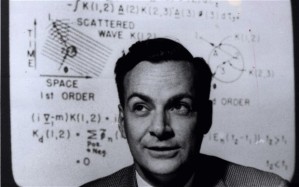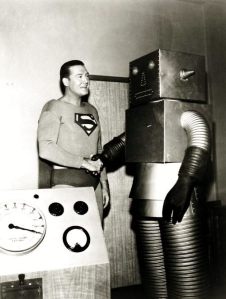I went through that post from Oliver Reichenstein from iA entitled “Mountain Lion’s New File System” that I found really interesting. Unfortunately I couldn’t comment on the blog so I decided to echo some of my thought in a blog post here.
(iA are the folks doing iA Writer, software that I now use to write things like this blog post since my friend Rainer showed me the way. I absolutely recommend it to people who like to write.)
First, kudos to the author, this is the kind of post that I really like! Instructive, inspiring, and raising questions. I really recommend to any person interested by UX and UI.
While the post is entitled on the Mac file system, I think it is not exactly the core topic – at least it was not for me. The core topic is how flat document organization is step by step taking over traditional tree based organization and how the “Tree” model doesn’t scale.
A global recurring UX problem to solve!
The interesting thing about this topic is that it touches every one, and it relates to almost all kind of applications. From consumer iTunes (as mentioned in the article) to very “Enterprise-grade” content repository (no need to explain that when you reach millions of documents in these time of Big-Data time, the nested-folder model is even worst). From photo software (think Aperture, Lightroom, iPhoto…) to business related applications (think crm, cms, project management with apps like Jira…). From file systems on a computer to native applications on an iPhone… and of course not to mention finding information on the Web or navigating through your email!

The new iTunes navigation, even no “tree like” navigation. Search is by far the main path to find your music.
The way you classify, store, manage information is a corner-stone of all software user interface, and the concept as much as the problems are the same in many different places.
Finding and accessing the desired information is a real problem, especially in this big data world where amount of both structured and unstructured content is growing exponentially, faster and faster.
Search, finally a way to classify information that works?
So the big thing which is changing is SEARCH. We used to access information a lot based on how we stored it and classified it, because for a long time, search was limited. Search technology is making progress, and at the same time, the amount of data and document we work with is constantly growing. As a direct result, accessing the information is more and more based on a search and discovery of the information repositories independently of how this information has been classified and organized by its creators. The user can’t remind all the way to access the information. It is not hard to understand why:
- First content creator are not good at organizing their information on a large-scale. They can totally skip the classification step or be wrong or not consistent in that job. The classification plans themselves can evolve and change.
- Second, after all, what defines more a document than the data and meta-data it naturally contains? Manual classification in many case is asking the user to define something that is already present in the document.
Email is may be the first place where this happened. It is at least where I started to notice it: highly unstructured content, the best practice of storing your emails in different mailboxes or folders and sub-folders worked for a few years but very quickly, the constantly growing volume of email made this simple operation both impossible (lack of time) and useless (not that much helping to find, as not consistent) and Gmail showed the way. The way was ‘a simple search’ combined with intelligent tagging. Now, me as many other users, are using their inbox as a global container where they keep their thousands and thousands of email, but simply use states (such as read / unread or archived) and tagging combined with search to retrieve them.
A flat 1-level organization of content
Another very simple example that we all went through which very similar: the way we organise our file systems. For instance, I used to store my work documents under an organization where I would split document between Admin stuff and Customer stuff. I placed all my expenses documents in admin, after 6 months, I started to place customer expenses in the project sub-folder in the customer main folder… I ended up with something totally not consistent). This is just one basic example that happened to me so many times.
 Just an example where the user – me – changes the way he classifies information, leading him to an inconsistent organization. And I am sure this is true for all of us, I know it is not only me as I watched my friends and colleague and I see how they work. Defining a fix structured or even using a fix taxonomy simply doesn’t work that well. I guess humans are not made to manage information in that way, even the more precise and organized persons are failing here at some points!
Just an example where the user – me – changes the way he classifies information, leading him to an inconsistent organization. And I am sure this is true for all of us, I know it is not only me as I watched my friends and colleague and I see how they work. Defining a fix structured or even using a fix taxonomy simply doesn’t work that well. I guess humans are not made to manage information in that way, even the more precise and organized persons are failing here at some points!
It is in fact way simpler to keep all that information in 1 level and forbid the creation of a 2nd level of sub-folders. Or forbid too complex classifications and let the search do the rest! And thanks to better search technology, this start now to be possible.
Snow Lion showing the way?
As iA mentioned in the article, OSX Snow Lyon made some significant progress in that perspective. The article from iA mentions a lot the iCloud capabilities. I am not an iCloud user, I don’t really plan to be one (even if this article has really seeded the idea of giving it a try…) but even without iCloud, the latest versions of OSX brought some innovation in that direction on the topic.
 My favorite one may be, in the finder: how spotlight has been integrated so that you can use the finder and order “All your files” accordingly to a range of criteria like Name, Application, Last Opened, Last Created… and combine this with a full-text search. This is brilliant.
My favorite one may be, in the finder: how spotlight has been integrated so that you can use the finder and order “All your files” accordingly to a range of criteria like Name, Application, Last Opened, Last Created… and combine this with a full-text search. This is brilliant.
Unfortunately, on this one, we are clearly still early stage, it is really painfully slow when you search on “All your files” and not in a single folder (but this might be ironically due to the fact that all the files are not yet in a 1-level tree…). Still, it is damn practical and clearly showing the way and I am sure performance issues will be solved!
Another attempt to make progress is the way applications are dealing with file versions. The removal of the “Save as …” in most Apple apps. and the management of the document abstracted from the file goes in the same direction. It is still I think very early stage and I have hard time to totally understand the real value (and still hates it on a regular basis…). This could also do a full topic for another blog post.
Consumer Vs pro, should there be a difference?
Back to iA article, the author speaks about how iCloud, the Finder and applications relying on this are benefiting from that new flat way to store and access content. However, they clearly say that in a professional context, it is not the same story and using the traditional tree of folders and folders and files is the way to go. That is also why they suggest both Dropbox and iCloud are different, one being a good fit for team work and the other for personal stuff.
I actually challenge this. I don’t understand why, in a professional context, suddenly, using different of folders to define a structure would be needed, and more importantly, would work.
Further more, I think that a professional context brings even more complexity, more information and more importantly more users which might have their own expectations of what the folder structure might be… in short more reasons for the organization of files to fail!
So, as much in Dropbox than in iCloud or Gdoc, as much in you iPhoto than in your Document Management System, the future is certainly going more and more to flat organizations of your files and more smart ways to navigate and discover this and not only a simple classification plan such as a multi-level folder organization.
In my job at eZ, building Content Management applications, we are really in the process of pushing search as the first way to discover content, before using the tree-based navigation. I hope to share soon some information about that.
‘In-Application’ navigation
The article of iA brings also another idea interesting to discuss. It introduces the fact that, while accessing information IN an Application, the discovery of the right file is made easier (for different reasons). This is true. Using the application context to facilitate the activity of finding your document is surely very interesting and efficient (starting by the very obvious idea of not dealing with the file that are not to be open in this application). There is however a very close next step that is to consider that the document live within the Application. I really think this is a wrong and dangerous concept and while it might seem to be a good way to improve UX, looking at it from a higher level, it would not! Reason for that is that Applications comes and go, today iA Writer is my favorite writing application, tomorrow it will be another. It is key to preserve and use as much as possible open standards for documents. It is also as important if not more, to preserve open ways to access documents and manage them, independently from the application. Locking users to and in the application is not the way to go (even if I understand application vendors want to do so) and can only result in very bad User Experience on the long run!
And here, unfortunately, Apple has been playing this game a lot, which is clearly starting to hurt end-user experience. For instance, I am personally into photo and I have been taking photos for some time. I have over the year a library of a few thousands photos. I used different configurations and applications to develop, manage and access my photos but the last 4 or 5 years, I have been with Apple Aperture photo software. This has in the end been very painful despite the many cool features Aperture could show. The upgrade cycle of Aperture has been hard to follow, sometime costly, the quality fluctuating a lot and the features not always really the best compared to competitors. Many time performances have been a pure disaster. In the end, the experience has been bad, mostly because, whatever I wanted to do, changing was not obvious, or should I say ‘using an alternative solution’ was not smooth. The library of Aperture, even if you keep the media out of Aperture, is creating a silo that you can’t access without Aperture and this is the main issue. Changing application means going for a real migration of your library.
I decided a few week ago to finally drop Aperture and to rely on a software that is not dictating how the files are stored (I am going to use DXO Optics Pro to develop and navigate in my library). At any time my library will still be organized in the file system and I will be able to use any other tool emerging with no effort! I am very happy and excited about finally making this change! But lets stop here (I could actually write another whole other blog post about that).
While I’m totally in for using context elements such as ‘which application is being used for a special document’, I think it is essential to let the system taking care of the documents independently from the application! Removing this would lead to only worst user experience in the long-term. There is enough room for progress in the operating system itself to stick to that!
And note that this is also something true that does apply to enterprise software like document and content management. Users and organizations would get a lot of value of an open storage. Storing in a database is totally ok but storing in an obscure, not readable data schema is way more of an issue.
It is all about context
Time to hit a conclusion, as I made this blog post way too long now, and doubt it has a very solid structure (but must more look like me talking to myself on all these interesting topics). I hope some will still have liked it!
My conclusion would be that if Apple shows the way to go here, it is certainly via Spotlight. With the ever-increasing amount of information we are dealing with, structured or unstructured, we can not any more classify ourselves and we need tools to do that. We need tools like strong search engine, we also need tool more advanced and I am really looking forward to see if some of the promising technology around text and data analysis, semantic or not, can finally bring value to end-users.
I would totally foresee topic extraction and mapping or named entity extraction and mapping as one of the technology to embed in the system for exploration purposes – auto discovery of the context. And more than ever, I look forward to see what will be the operating system of the future! Will Apple still show the way here? What do you think?
40.728925
-73.954635
 Very little time to share words here lately! It’s not yet time for a long story today but just sharing shortly one of my new hobby, may be one of the reasons why I don’t spend time on this blog… I stumbled upon a video of Richard Feynman lately on YouTube. I don’t know how this happened, someone must have shared it and I must have just follow. Most of the time social media can be entertaining at first but often quite depressing shortly after with an after-taste of “why do I lose my time on this?”, but this time however I got there and I don’t regret it.
Very little time to share words here lately! It’s not yet time for a long story today but just sharing shortly one of my new hobby, may be one of the reasons why I don’t spend time on this blog… I stumbled upon a video of Richard Feynman lately on YouTube. I don’t know how this happened, someone must have shared it and I must have just follow. Most of the time social media can be entertaining at first but often quite depressing shortly after with an after-taste of “why do I lose my time on this?”, but this time however I got there and I don’t regret it.





 My favorite one may be, in the finder: how spotlight has been integrated so that you can use the finder and order “All your files” accordingly to a range of criteria like Name, Application, Last Opened, Last Created… and combine this with a full-text search. This is brilliant.
My favorite one may be, in the finder: how spotlight has been integrated so that you can use the finder and order “All your files” accordingly to a range of criteria like Name, Application, Last Opened, Last Created… and combine this with a full-text search. This is brilliant.



